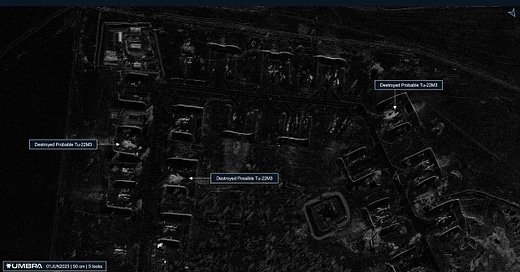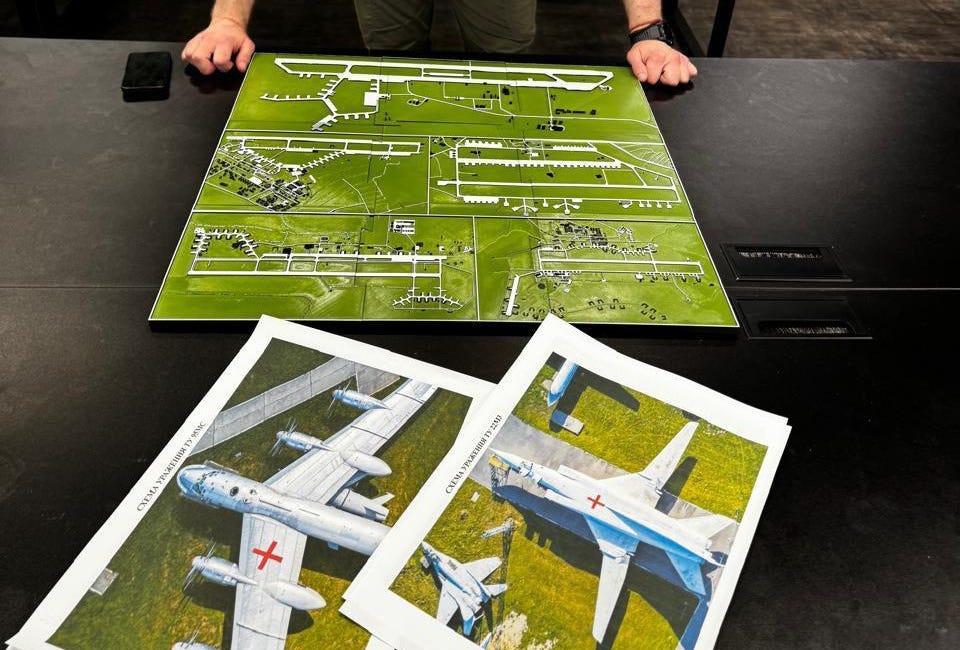The Russian Air Force May Be Down to 52 Flyable Tu-22Ms
Ukrainian missiles and drones have destroyed seven of the swing-wing bombers
The first post-strike satellite imagery is beginning to appear online a day after the Ukrainian security service, or SBU, staged a devastating drone raid on air bases across Russia.
The imagery of Belaya air base, in Irkutsk Oblast 2,700 miles from Ukraine, confirms damage to four Tupolev Tu-95MS bombers and four Tupolev Tu-22M3 bombers. There’s a good chance all eight are write-offs.
SBU agents reportedly hijacked at least three Russian tractor trailers and loaded them up with special containers with top-mounted hatches, inside of which were concealed scores of small first-person-view drones.
The explosive quadcopters communicated with their operators via Russia’s telecommunications network. The drones reportedly featured A.I. seekers the SBU had trained to recognize Russian bomber types.
Two of the hijacked trucks deployed their drones. One lit on fire and burned, sparing one Russian base and its resident bombers. In addition to striking Belaya, the SBU also hit Olenya air base on the Kola Peninsula 1,200 miles from Ukraine.
The SBU claimed it hit a third of Russia’s bombers—that is, nearly 40 of the 47 Tu-95s, 56 Tupolev Tu-22Ms and 15 Tupolev Tu-160s the Russian air force operated prior to Sunday’s raids. The bombers routinely fire cruise missiles at Ukrainian cities,
Imagery from the Sunday raid seemed to confirm the destruction of just three Tu-95s and an Antonov An-12 transport at Olenya. But the same early imagery pointed to just two wrecked Tu-22Ms and single wrecked Tu-95 at Belaya—a tally we now know was low. The actual toll was more than twice as high.
Lucky Tu-160s
The FPVs that pummeled Belaya in broad daylight on Sunday, buzzing right past local air-defenses, seem to have focused their firepower on the dispersed revetments on the southeast side of the base as well as the stretch of tarmac on the south-central side of the base.
The revetments housed Tu-22Ms. Tu-95s sat on the tarmac. Precious Tu-160s were parked on the northwest corner of the base, which may have escaped major damage.
Satellite imagery from just before the Sunday raid revealed no fewer than 92 aircraft at Belaya. As more post-strike imagery becomes available, we can say with confidence the SBU drones hit eight of the planes.
The hits on Tu-22Ms at Belaya bring to at least seven the number of the swing-wing, twin-jet bombers the Ukrainians have destroyed since Russia widened its war on Ukraine 39 months ago. Drones got six. A Ukrainian air force S-200 surface-to-air missile got the seventh.
Potentially 52 of the Tu-22Ms are left—unless future passes by satellites confirm additional losses resulting from the Sunday attacks.
But the survivors aren’t safe. “I imagine there’s still another phase to this operation,” mused Ben Hodges, a retired U.S. Army general. Unless the Russian air force can find reinforced hangars for a hundred or more large aircraft, and fast, the remaining bombers are vulnerable to follow-on attacks.
Read more:
On Saturday, Russia Had the World's 2nd Biggest Bomber Force. After Smuggled Ukrainian Drones Attacked on Sunday, It Might Have the 3rd Biggest.
Ukraine’s Operation Spider Web—coordinated strikes on at least two Russian air force bases by short-range attack drones smuggled near the bases in hijacked long-haul trucks—destroyed 34 percent of the strategic bombers at those bases on Sunday, claimed







